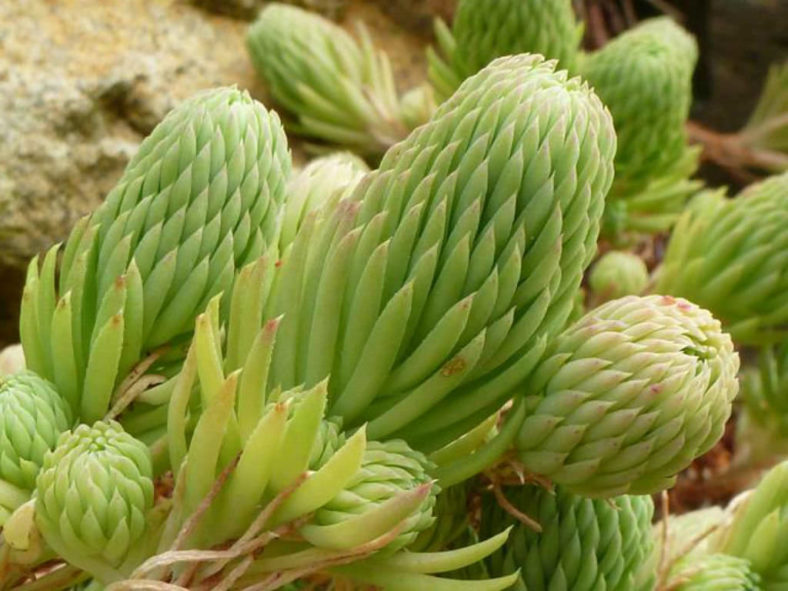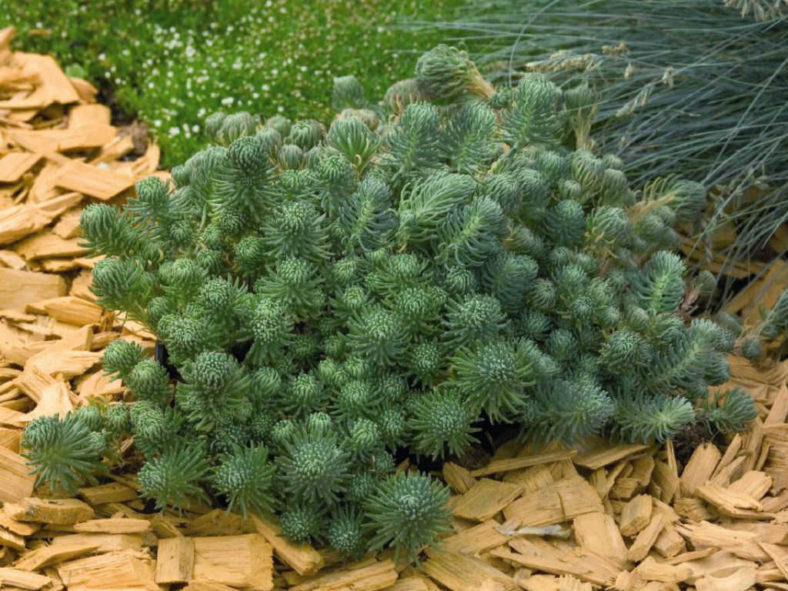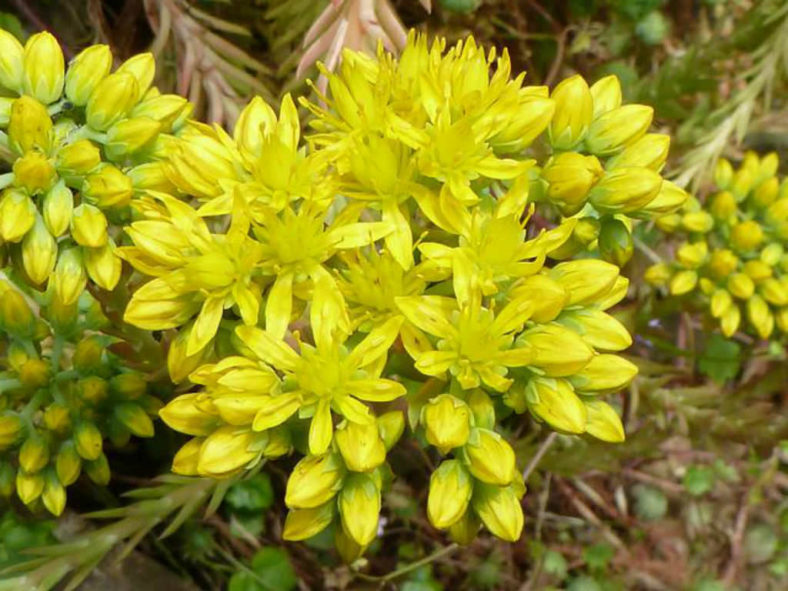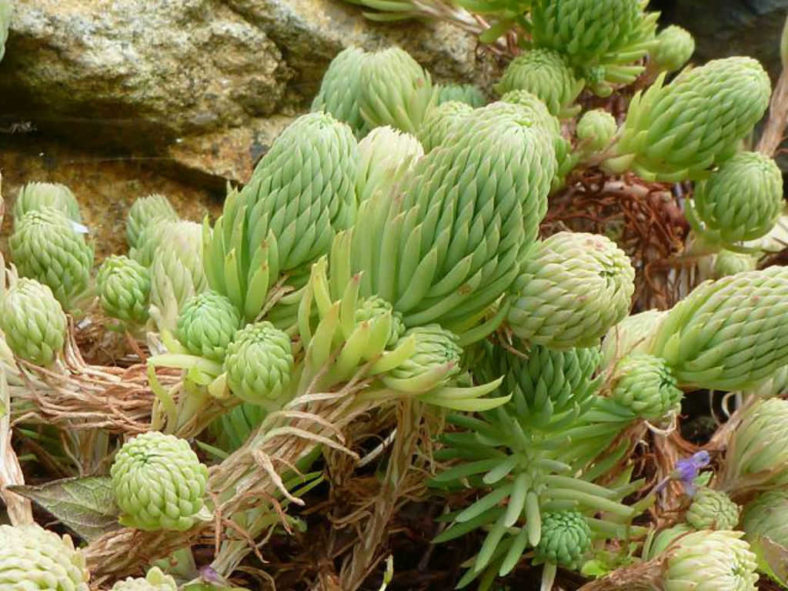Scientific Name
Petrosedum forsterianum (Sm.) V. Grulich
Common Name(s)
Forster's Stonecrop, Rock Stonecrop
Synonym(s)
Petrosedum rupestre var. forsterianum, Sedum forsterianum, Sedum lejeunianum, Sedum pruinatum subsp. forsterianum, Sedum rupestre var. forsterianum, Sedum rupestre subsp. forsterianum
Scientific Classification
Family: Crassulaceae
Subfamily: Sedoideae
Tribe: Sedeae
Subtribe: Sedinae
Genus: Petrosedum
Etimology
The specific epithet "forsterianum" (pronounced "for-ster-ee-AY-num") honors Edward Forster the Younger (1765-1849), an English banker and botanist.
Origin
Petrosedum forsterianum is native to Western Europe and Morocco. It grows from sea level up to 4,920 feet (1,500 m).
Description
Petrosedum forsterianum, formerly known as Sedum forsterianum, is a succulent plant with branches that trail along the ground and linear, more or less flattened leaves arranged into terminal loose, cone-like rosettes. The branches can grow up to 8 inches (20 cm) long. The leaves are green or glaucous, elliptic in cross-section, and can measure up to 0.6 inches (1.5 cm) in length. The dead leaves persist on the branches.
The flowers are star-shaped, typically 5- to 7-merous, and appear in summer in erect, terminal inflorescences topped with an umbellate cyme of forked and recurved branches. The inflorescences can grow up to 12 inches (30 cm) tall.
Petrosedum forsterianum is often mistaken for Petrosedum rupestre, a similar but more robust species found in identical habitats that differ in having no dead leaves below the terminal rosettes.

How to Grow and Care for Petrosedum forsterianum
Hardiness: USDA hardiness zones 4a to 9b: from -30°F (-34.4°C) to 30°F (-1.1°C).
When growing Sedums, keep in mind that these plants need very little attention or care. They will thrive in conditions where many other plants thrive, but also do just as well in less hospitable areas. They are ideal for that part of your yard that receives too much sun or too little water to support the growth of other plants. A common name for Sedum is Stonecrop because many gardeners joke that only stones need less care and live longer.
Sedum is easily planted. For shorter varieties, simply laying the plant on the ground where you want it to grow is usually enough to get it started there. They will send out roots from wherever the stem touches the ground and the root itself. If you would like to ensure that the plant starts growing there, you can add a very thin layer of soil over the plant.
You can break off one of the stems for taller varieties and push it into the ground where you want to grow it. The stem will root very easily, and a new plant will be established in a season or two.
Learn more at How to Grow and Care for Sedum.
Links
- Back to genus Petrosedum
- Succupedia: Browse succulents by Scientific Name, Common Name, Genus, Family, USDA Hardiness Zone, Origin, or cacti by Genus
Photo Gallery
Click on a photo to see a larger version.


